An electric airless paint sprayer is a valuable tool for anyone looking to achieve a professional-quality finish with less effort and time. Whether you’re a DIYer working on a home project or a professional handling larger jobs, a good airless sprayer can help you cover large areas quickly and evenly. These sprayers are known for their ability to deliver smooth, consistent results, making them ideal for walls, ceilings, fences, and even furniture.
In this guide, we’ll take a look at some of the best electric airless paint sprayers, examining their features and performance. We’ll help you understand what to look for in a sprayer, from ease of use to cleaning and maintenance, so you can choose the best option for your needs. Whether you’re tackling an interior makeover or an outdoor project, you’ll find the right sprayer to get the job done efficiently and effectively.
What Does “Electric Airless” Mean?
“Electric airless” is somewhat of a hybrid term: it implies a pump-driven sprayer (no compressed air) powered by electricity. That allows you to maintain high pressure and good coverage without needing a separate compressor.
Compare that with classic “electric paint sprayer” tools (which often use air assistance or HVLP), and you see the distinction: airless systems push undiluted paint through a fine nozzle, creating a strong, even spray.
In other words:
- Electric paint sprayer (broader term) might include air-assisted or HVLP types
- Electric airless paint sprayer is stricter: pump + electric motor + no compressor
When you search “best handheld airless paint sprayer” or “best airless paint sprayer uk,” some models drift into lighter “mini” versions that sacrifice power. Keep that in mind.
Why Using an Airless Sprayer Can Outperform Rollers & Brushes
Most painters instinctively think roller and brush. But a strong electric airless system gives you:
- Faster coverage on large flat surfaces
- Smoother finish with less texture
- Ability to spray thick paints without extreme thinning
- Less fatigue on big jobs
Still, it’s not perfect:
- Overspray can be a real risk if not controlled
- Cleaning can be tedious
- Sometimes too much power for small jobs
If you’re doing ceilings or edges, combining a sprayer with precision work is smart. You might want to peek at my guide on the best way to paint edges between wall and ceiling to see how sprayers mesh with detail work.
Top Picks: Best Electric Airless Paint Sprayers for DIYers
Below are a few standout models I recommend. I focus on real strengths, weaknesses, and user experience rather than just specs.
1. Best Overall: Graco Magnum X5 and X7
The Magnum X series is the best electric airless paint sprayer for most users. It delivers consistent coverage on walls, ceilings, fences, and trim without needing a compressor. The X7 adds a wheeled cart for easier movement on large projects.
Best for whole-room repaints, ceilings, decks, or rental turnovers.
- Pulls paint directly from 1- or 5-gallon buckets
- Adjustable pressure for multiple coatings
- Compatible with a wide range of tips
- Easy parts availability and servicing
- Clean up with soap and water
- Must be cleaned thoroughly after every use
- Heavier than handhelds
See related guides like best ceiling paint sprayer and how to clean walls before painting.
2. Best Handheld: Graco TrueCoat 360 DS or VSP
This is the best handheld airless paint sprayer for smaller tasks like furniture, cabinets, and accent walls. It’s lightweight and sprays at multiple angles with a flexible liner cup.
Best for doors, trim, furniture, and touch-ups.
- Pulls paint directly from 1- or 5-gallon buckets
- Adjustable pressure for multiple coatings
- Compatible with a wide range of tips
- Easy parts availability and servicing
- Clean up with soap and water
- Must be cleaned thoroughly after every use
- Heavier than handhelds
- Not ideal for thick coatings
For smaller projects, check best paint for kitchen cabinets and best paint edging tool.
3. Best Low-Overspray Choice: Titan ControlMax HEA
Titan’s High Efficiency Airless technology cuts overspray while maintaining good coverage, making it a top pick for those wanting cleaner results indoors.
Best for interior walls, ceilings, and detailed spaces.
- Up to 55% less overspray than traditional systems
- Smooth, consistent spray pattern
- Easy pressure adjustment
- Durable design for frequent use
- Clean up with soap and water
- Slightly slower coverage speed
- Tip compatibility limited to HEA series
Also read best ceiling paint for bathrooms for prep tips.
4. Best Budget Choice: InoKraft MaXpray M1
This inexpensive airless paint sprayer offers solid results for budget-conscious DIYers. It’s ideal for small projects or rental refreshes.
Best for small interiors, fences, and single-room jobs.
- Lightweight and compact
- Affordable with decent performance
- Minimal overspray on low pressure
- Clean up with soap and water
- Durability less than premium brands
- Noisy operation
- Limited parts availability
Check best budget ceiling paint for complementary painting products.
5. Best Commercial Pick: Graco ProX19 or Titan Impact 440
These heavy-duty models are the best commercial paint sprayers, ideal for contractors or anyone managing daily painting operations.
Best for multi-room jobs, exteriors, or rental complexes.
- Handles high workloads easily
- Long hose runs for tall surfaces
- Easy maintenance and repair parts
- Professional-grade finish quality
- Clean up with soap and water
- More expensive than home-use models
- Heavier build
- Overkill for light DIY use
Useful reads: best ladder for painting and respirators for paint.
6. Best Value Cart: VEVOR Electric Airless Kit
For those who want power and reach on a budget, the VEVOR cart system offers good performance for its price.
Best for one-time large projects, garages, and sheds.
- Great value for price
- Sufficient power for latex and primers
- Quick assembly and operation
- Clean up with soap and water
- Quality varies by batch
- Not for daily use
- Limited support options
Complementary reads: best paint for garage walls and best paint for exterior door.
How to Pick the Right Sprayer (Your Buying Checklist)
Here’s what you should test or ask before buying rather than relying solely on marketing:
| Feature | Why it matters | What to target |
|---|---|---|
| Adjustable pressure | Flexibility for different surfaces | A wide adjustment range (low to high PSI) |
| Hose length & diameter | Affects how far you can spray | At least 50 ft (15 m) or more for walls & ceilings |
| Spray tip compatibility | Larger tips handle thicker paints | Compatibility with various nozzles (0.015–0.021) |
| Ease of cleaning / dismantling | You’ll regret a tool that’s a nightmare to clean | Quick-release parts, accessible filters |
| Service & parts availability | Even great models fail—spare parts matter | Check if replacements are available locally |
| Weight / portability | Especially for handheld work | Lighter is easier but may compromise power |
Always test the sprayer before your real job, especially with your actual paint. Some paints behave differently.
Practical Tips & Common Mistakes
A sprayer can speed up other painting tasks too. When you’re painting ceilings, combining a sprayer for broad surfaces with careful edging gives faster results. Read my guide on the best way to paint a ceiling for extra techniques.
Final Verdict & Recommendations
For 2025, the winner tends to be the Graco Magnum X series paired with a handheld TrueCoat. You get flexibility, power, available parts, and a proven reputation. For commercial users, heavy cart models or professional-grade units are better suited for daily workloads.
If budget is a concern, an affordable electric airless sprayer can still handle small projects as long as you understand its limitations. Clean it well, use compatible paints, and store it properly.
Before your next job, check these helpful guides:
These articles complement this one and ensure your next painting project looks professional, lasts longer, and wastes less paint.

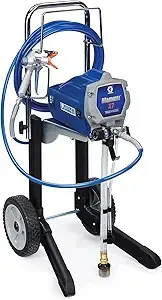
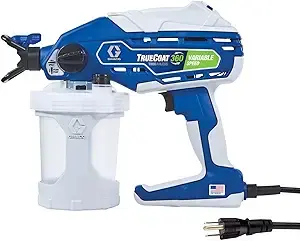
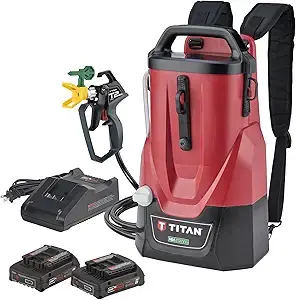
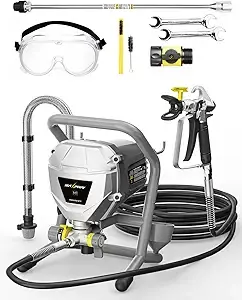
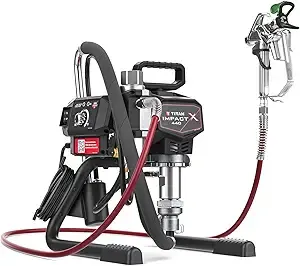
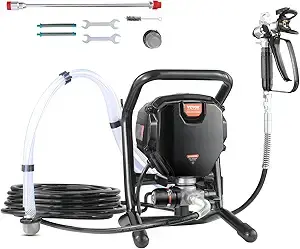
Leave a Reply